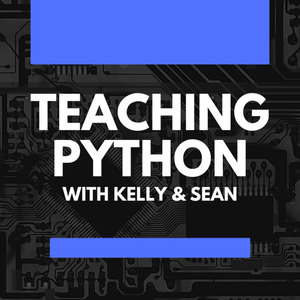
As a new year and semester begins, educators and young coders have a great opportunity to set fresh personal and academic goals. Goals are not just about finding ways to stay motivated but they are about creating a strategic roadmap to success. In coding and computer science, setting clear and achievable goals is also crucial for enhancing skills, boosting confidence, and deepening technological understanding.
Will Crichton, at the age of 17, aspired to become a professional game developer. He blogged about his journey learning programming and software design fundamentals and how he found it difficult to advance his skills. Crichton realized the importance of setting specific goals and seeking guidance to overcome learning obstacles. Crichton's path illustrates how goal setting can drive personal growth and skill development in computer science. His goal-oriented approach made learning more engaging and relevant, proving that the key to effective learning in programming is acquiring knowledge and applying it to achieve meaningful objectives. (Read more about Will Crichton's learning journey here.)
The Importance of Goal Setting in Coding Education
Goal setting is especially vital for students in programming. It maintains a sharp focus, helps students hone essential skills like time management and determination, and fosters a mindset geared toward continuous improvement. Meeting these goals brings significant rewards in coding education, where technology and techniques continuously evolve.
Establishing goals is not just a routine task for students navigating the complexities of coding and computer science; it's an essential strategy for growth and achievement. Clear, well-defined goals transform the learning process, making it more structured and outcome-focused. They serve as benchmarks that students strive to reach, providing a clear sense of direction and purpose in their educational journey.
Steve Covey's "7 Habits of Highly Effective People," emphasizes the importance of having a clear vision and mission to accomplish tasks, setting goals in coding education should also use this method and focus on the end objective. This method, known as "Beginning with the End in Mind," is a powerful tool for personal growth and crafting enriching learning experiences for 21st-century students. By visualizing desired outcomes, we lay the foundation for a curriculum where goals are set and achieved through strategic planning and continuous assessment.
Leveraging SMART Goals in Coding Education
Incorporating structured goal-setting strategies, like SMART goals, can transform the hopes of budding coders into successful futures. SMART goals – Specific, Measurable, Achievable, Relevant, and Time-bound – offer a framework that promotes realistic and attainable goal targets. Technology is constantly shifting and growing, and students must swiftly adapt to these new technologies and methodologies; goal setting can help with this mindset.
By adopting a goal-setting mindset, educators can help to create a supportive environment for young coders that prepares students for a successful career in technology. This mindset helps to empower learners to break down complex coding concepts and projects into manageable tasks, track their progress, and celebrate their achievements, fostering a sense of accomplishment and a drive to tackle more advanced challenges.
Introducing Stretch Goals
Stretch goals are an extension of the SMART goal framework, designed to push students beyond their comfort zones and foster exceptional growth. These ambitious objectives are not always immediately achievable, but they encourage students to expand their skills and knowledge in coding. Stretch goals inspire innovation and creativity, prompting learners to explore new possibilities and solutions in computer science. By integrating stretch goals into coding education, educators can motivate students to surpass their perceived limitations, cultivating a mindset that is essential for breakthroughs in technology and personal development.
These tips can be seamlessly added into the curriculum to help students develop Goal Setting skills for coding and learning.
Enhanced Tips for Goal Setting in Coding
Cultivate a Mastery Orientation: Motivate students to focus on personal challenges. This help them find ways to maximize their learning in areas of interest. Encourage kids to set goals that reflect their own aspirations and interests, fostering a deeper engagement with their learning journey. Also can be used for Holistic learning: set goals across various life areas, including academics, hobbies, social life, health, and long-term aspirations, to foster well-rounded development.
Frequent Monitoring and Review: Regular assessments of goals and the progress are essential. Using tools like Goal Setting Templates, tally marks, or journals to track progress and tweak goals. Example: Implement journaling as a method for kids to record, track, and reflect on their goals. This tangible tool aids in monitoring progress and adjusting goals as needed. Set up a system for regular meetings or check-ins to monitor goal progress. This provides an opportunity for guidance, encouragement, and necessary adjustments to goals.
Personalize the Goal-Setting Process: Acknowledge each student's uniqueness. Assist them in defining specific objectives aligning with their coding talents and career goals. No one goal fits them all. Encourage personalization. Help students set goals that are meaningful to them and aligned with their personal interests and academic needs. Guide them to prioritize a limited number of goals (one to three) to maintain focus and prevent feeling overwhelmed. Revisit and adjust these priorities regularly.
Encourage Reflection and Self-Assessment: Regular reflection and thinking about thinking excercises helps students identify their areas of advancements, weaknesses and the overall learning journey. Encourage regular reflection on goals, including what works and what needs adjustment. Teach kids to be flexible and adapt goals based on their experiences and changes in circumstances.This reflection helps to develop learners perseverance and resilience.
Integrate Goal Setting into Daily Learning: Embed goal setting into everyday life and their coding education. This helps establish a culture of continuous improvement and personal growth. Create an environment where kids can share their goals with peers and educators. Encourage mutual support and accountability in goal setting and achievement.
There are many benefits to using goal setting in the education. Here are a few to consider.
Benefits of Goal Setting for Aspiring Coders
Improved Academic and Practical Outcomes: Use of proficient goal setting techniques can help to significantly build and develop coding and problem-solving skills. Research shows that effective goal setting can help to improve student learning. Holistic goal setting helps children see the interconnectedness of their coding goals with other aspects of their lives, leading to a more balanced and fulfilling approach to learning.
Increased Motivation and Engagement: Accomplishing goals can help build motivation and encourage students to focus on specific achievements for coding projects. Meeting both short-term SMART goals and long-term stretch goals boosts kids' confidence in their coding abilities and in their capacity to achieve ambitious targets.
Development of Essential Life Skills: Goal setting in coding cultivates resilience, time management, and problem-solving competencies, which are vital for success in technological careers.
Enhanced Self-Efficacy: By achieving goals in coding, kids build confidence in their abilities, fostering a positive attitude towards learning and future challenges. When goals are set and achieved, students feel more in control and invested in their learning process. This empowerment leads to greater engagement and enthusiasm in coding activities.
Cultivation of a Growth Mindset: Regularly setting and acheiving goals helps to motivate students to perceive challenges helps students develop a growth mindset, where they view challenges as opportunities for growth rather than obstacles.
Integrating structured goal-setting strategies, such as SMART goals and stretch goals can turn average coders into passionate life long learners. By teaching students how to embrace goal setting, educators can create a nurturing environment that enhances coding skills and equips students for a successful future. Goal setting helps to cultivates disciplined, goal-oriented professionals ready to innovate and lead in the ever-evolving tech landscape.
Resources
Crichton, Will. "Learning Through Goals in Computer Science." 22 Sept. 2016, [willcrichton.net/notes/learning-through-goals-in-computer-science/](willcrichton.net/notes/learning-through-goals-in-computer-science/).
Gonzalez, Jennifer. "How to Help Students Set and Track Goals." Edutopia, George Lucas Educational Foundation, 4 Jan. 2021, www.edutopia.org/article/framework-student-goal-setting.
Gonzalez, Jennifer. "Thinking Critically About Goal Setting." Edutopia, George Lucas Educational Foundation, 11 Jan. 2021, www.edutopia.org/article/thinking-critically-about-goal-setting.
Nordengren, Ryan. "Goal-Setting Practices that Support a Learning Culture." Kappan, Phi Delta Kappa International, 25 Oct. 2021, kappanonline.org/goal-setting-practices-support-learning-culture-nordengren/.
"The 7 Habits of Highly Effective People®: Habit 2." FranklinCovey, Franklin Covey Co., www.franklincovey.com/the-7-habits/habit-2/.
